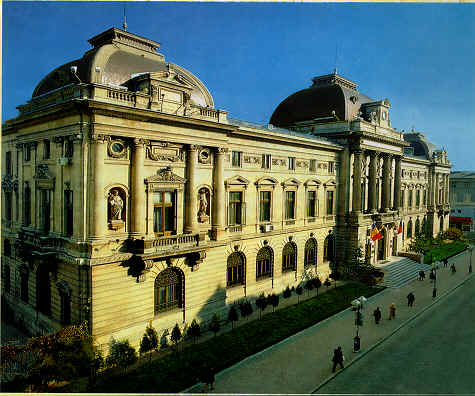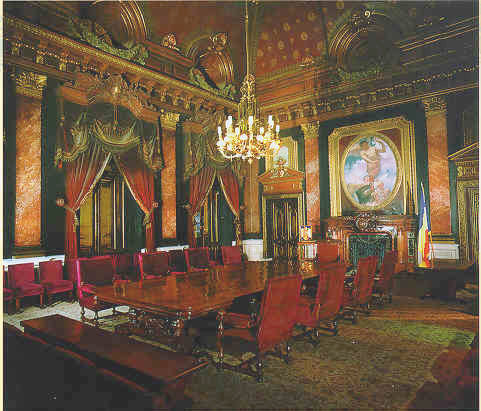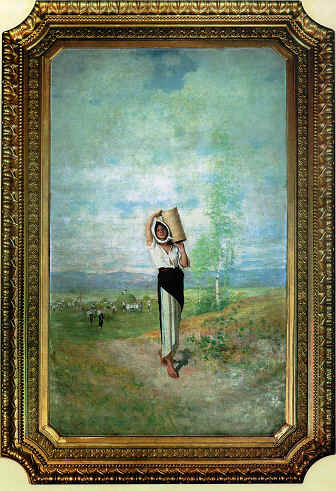
The head office of the National Bank of Romania with the view of Lipscani Street is one of the most imposing and massive bank edifices in Romania, nowadays a historic, art monument, and protected as such. It was erected on the former site of the inn built by Serban Cantacuzino (1678-1688).
On 26th February 1882, architects Cassien Bernard and Albert Galleron were assigned the task to blueprint the NBR Palace. The construction of the building in the eclectic style of the late 19th century, with some neo-classical elements, proceeded between 12th July 1884 (when the foundation stone was laid) and June 1890 under the direction of the architect engineer Nicolae Cerchez assisted by architect E. Baicoianu.

The Council Chamber - a rectangular room lavishly adorned with floral and geometrical motifs made of gilded stuccowork, furnished with Louis XIV pieces, Cordoba leather chairs, impressive bronze chandeliers and purple brocade hangings with gold thread embroidery has walls embellished with four monumental paintings enclosed in massive stucco frames.
Two paintings by G. D. Mirea in 1891 decorate the smaller sides, namely "Mercury" above the entrance and "Prometheus" on the opposite wall, each of them hanging over a fireplace.

Two masterpieces hang on the wall to the right of the entrance, namely a painting by Nicolae Grigorescu and another one by Eugen Voinescu.
The painting by Grigorescu - made in 1894 - is called "Out in the Fields" (better known as "Rodica").
The Voinescu-authored painting is a large marine, dated 1893, and pictures the harbour of Constanta.
The four monumental paintings hosted by the NBR Council Chamber make up one of the most valuable interior decoration ensembles accomplished by Romanian painters.
↑ sus